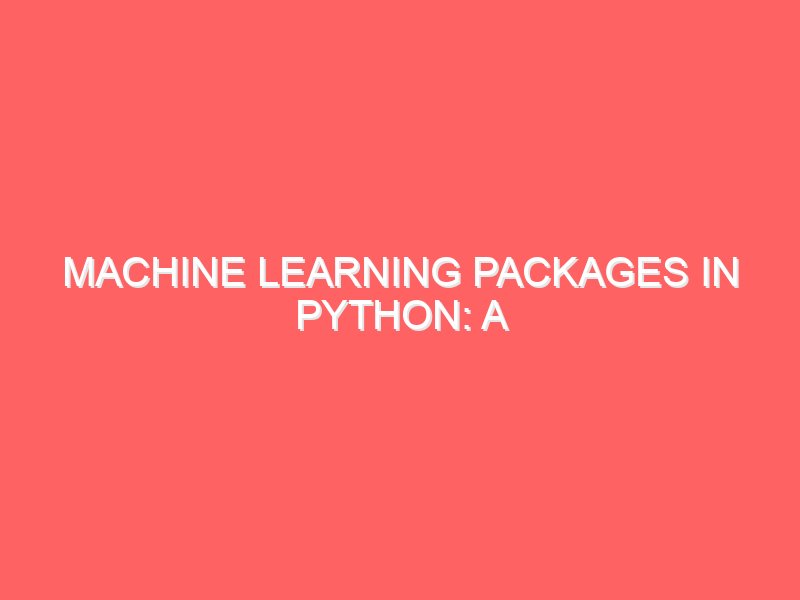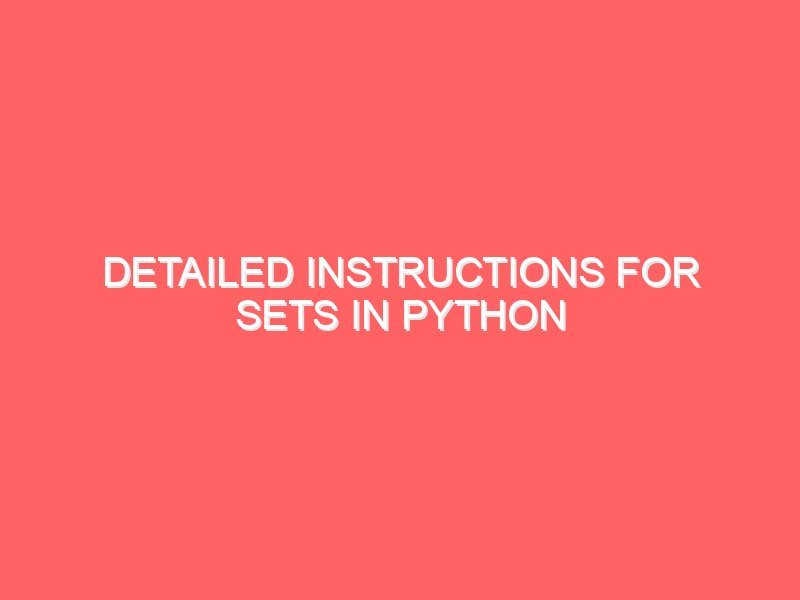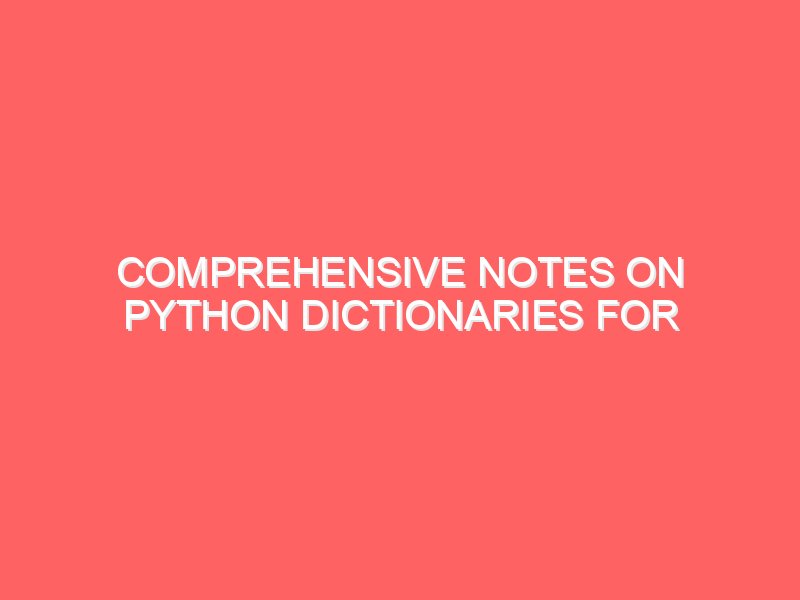Machine Learning Packages in Python: A Beginner’s Guide
Hello there! Welcome to the exciting world of machine learning (ML). If you’re just starting out, you’ve picked the perfect time to dive in. Machine learning is reshaping industries and unlocking new potentials in ways that were previously unimaginable. And guess what? You don’t need a PhD in computer science to start coding your own ML models. With Python’s vast ecosystem of libraries and packages, you can jump right in and start creating. Let’s explore some of the most popular machine learning packages in Python together. 1. Why Python for Machine Learning? Ease of Use and Readability Python is known for its simplicity and readability. Even if you’re new to programming, Python’s syntax is straightforward and easy to grasp. This simplicity allows you to focus on learning ML concepts rather than getting bogged down by complex code. Extensive Libraries and Community Support Python boasts an extensive collection of libraries and a vibrant community of developers. If you run into any issues or have questions, chances are, someone has already encountered and solved similar problems. Plus, many libraries are specifically designed for machine learning, making your journey smoother and more enjoyable. Code in Ranchi with Emancipation Edutech For those of you in Ranchi, learning Python and machine learning is even more accessible with local support. Emancipation Edutech offers comprehensive python training and machine learning courses that cater to all levels. You can learn in a community setting, gaining practical knowledge that you can apply immediately. 2. Getting Started with NumPy What is NumPy? NumPy (Numerical Python) is the foundation of numerical computing in Python. It provides support for arrays, matrices, and many mathematical functions that are essential for scientific computing. Installing NumPy To install NumPy, you can simply use pip: Key Features of NumPy Array Objects NumPy introduces the array object, which is far more efficient than Python’s native lists. Arrays allow for element-wise operations, which is crucial for machine learning algorithms. Mathematical Functions NumPy comes with a plethora of mathematical functions, from basic arithmetic to complex linear algebra operations. These functions are optimized for performance, making your code run faster. Exercises and Practice Problems To solidify your understanding of NumPy, try these exercises: Feel free to share your solutions or ask questions in the comments below! 3. Exploring Pandas for Data Manipulation What is Pandas? Pandas is another essential library for data manipulation and analysis. It provides data structures like Series (1-dimensional) and DataFrame (2-dimensional), which make it easy to handle and analyze structured data. Installing Pandas You can install Pandas using pip: Key Features of Pandas DataFrames DataFrames are like Excel spreadsheets or SQL tables. They allow you to store and manipulate tabular data efficiently. Data Cleaning and Preparation Pandas provides powerful tools for data cleaning and preparation, which are crucial steps in any machine learning project. Real-World Application in Ranchi With python training from Emancipation Edutech, you can master Pandas and start working on real-world projects. Imagine analyzing data from local businesses or government datasets to find insights and drive decisions. Exercises and Practice Problems These exercises will help you get comfortable with Pandas and its capabilities. 4. Scikit-Learn: The Go-To Library for ML What is Scikit-Learn? Scikit-Learn is a powerful library for machine learning in Python. It provides simple and efficient tools for data mining and data analysis, built on NumPy, SciPy, and Matplotlib. Installing Scikit-Learn Installing Scikit-Learn is straightforward with pip: Key Features of Scikit-Learn Preprocessing Scikit-Learn offers various preprocessing techniques to prepare your data for machine learning algorithms. Classification, Regression, and Clustering Scikit-Learn supports a wide range of machine learning algorithms for classification, regression, and clustering. Hands-On Learning Through Emancipation Edutech’s python training, you can gain hands-on experience with Scikit-Learn. You’ll learn to build, train, and evaluate models, giving you a solid foundation in machine learning. Exercises and Practice Problems Practicing these problems will give you a good grasp of Scikit-Learn’s functionality. 5. TensorFlow and Keras: Deep Learning Powerhouses What are TensorFlow and Keras? TensorFlow is an open-source machine learning library developed by Google. Keras is an API built on top of TensorFlow that simplifies the process of building and training neural networks. Installing TensorFlow and Keras You can install both TensorFlow and Keras using pip: Key Features of TensorFlow and Keras Building Neural Networks With TensorFlow and Keras, you can easily build and train neural networks for deep learning applications. Flexibility and Scalability TensorFlow is highly flexible and scalable, making it suitable for both small projects and large-scale applications. Code in Ranchi At Emancipation Edutech, you can dive into deep learning with TensorFlow and Keras. Whether you’re interested in computer vision, natural language processing, or other AI applications, our python training can help you achieve your goals. Exercises and Practice Problems These exercises will help you understand the power and flexibility of TensorFlow and Keras. 6. PyTorch: A Dynamic Approach to Deep Learning What is PyTorch? PyTorch is another popular open-source deep learning library. Developed by Facebook’s AI Research lab, it’s known for its dynamic computation graph, which makes it easier to debug and more intuitive to use. Installing PyTorch You can install PyTorch using pip: Key Features of PyTorch Dynamic Computation Graph PyTorch’s dynamic computation graph allows you to modify the graph on the fly, which is particularly useful for research and development. Ease of Use PyTorch’s API is designed to be intuitive and easy to use, making it a favorite among researchers and practitioners. Learning with Emancipation Edutech With python training at Emancipation Edutech, you can master PyTorch and become proficient in building and training neural networks. Our courses are designed to provide you with practical skills that you can apply in real-world scenarios. Exercises and Practice Problems These exercises will give you a strong foundation in using PyTorch for deep learning. Conclusion: Your Path to Mastering Machine Learning Machine learning is a fascinating field with endless possibilities. With Python and its rich ecosystem of libraries, you can transform data into actionable insights and create intelligent systems. Whether you’re in Ranchi
Machine Learning Packages in Python: A Beginner’s Guide Read More »









